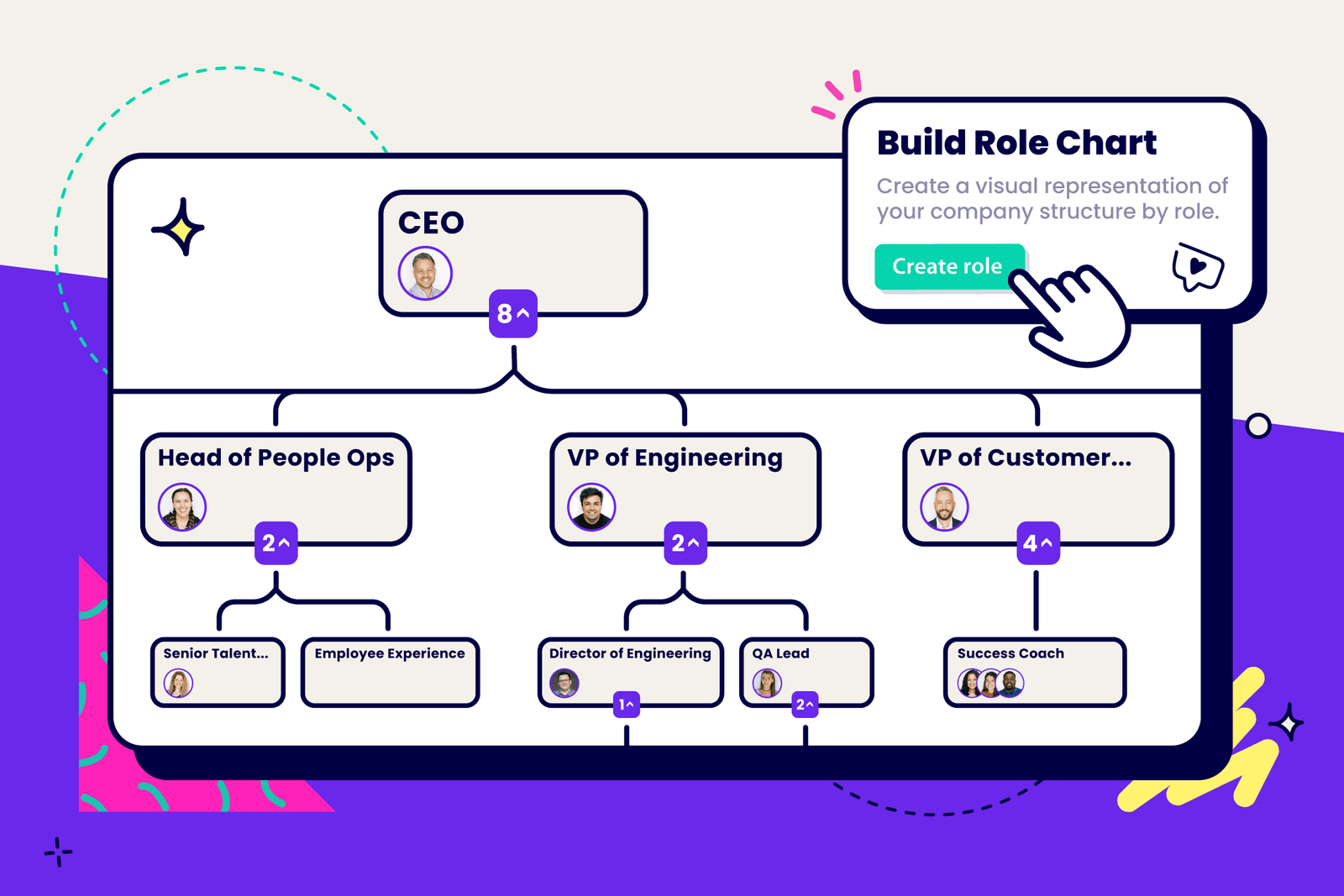How to solve the onboarding mistakes that cost you thousands of dollars
November 1, 2023

Hot off the SMB press this week:
- This template outlines the best way to lead one-on-one meetings.
- Your employee turnover could be linked to these three onboarding mistakes.
- How Trainual’s role chart can help your employees grow.
- Find out how your mission and vision can really help your employees connect.
STARTER PACK
Template of the week: Leading Effective 1:1 Meetings Template

When it comes to building a team of self-motivated, proactive employees, there’s no better tool than the one-on-one (1:1) meeting.
Employees get uninterrupted time with their direct managers to share information, collaborate, and uncover new opportunities to grow and potentially move to a bigger role. And leaders get use the time to get a pulse on what everyone is doing, improve their leadership skills, and build the trust that’s so crucial to employee retention and a transparent, open company culture.
Ultimately, well-run 1:1s lead to better collaboration and strategic alignment across individuals, managers, teams, and the wider organization. So, how do businesses set up a meeting structure that teaches managers how to better connect with their direct reports?
👉 Look no further than our Leading Effective 1:1 Meetings Process template. It outlines how to schedule and prepare for 1:1 meetings so that they’re useful for both the manager and their employees. Customize the template to best suit your company’s needs, and then it’s ready to share with your team.
Want more templates to help you build your business playbook? Check out our entire template archive of free, multimedia-enhanced, and customizable policy, process, and role starters. New to Trainual? Get a demo.
ONBOARDING BLUES
3 onboarding issues contributing to employee turnover
It’s a tough world out there.
According to a recent report from Qualtrics, only 38% of employees who have been working at a company for six months or less plan to stay at least three years. That means that almost two-thirds of all your new hires don’t plan to stick around — and you’ll have to worry about replacing them sooner rather than later.

And all this hiring is not just costing you in awkward interviews. It’s costing you money.
Let’s talk figures.
Consider the time spent by everyone who needs to be involved in hiring — from HR to management and even top leadership. That’s time taken away from their other responsibilities, and those soft costs add to your hiring costs.
So much so that some employers believe that each hire costs three to four times the position’s salary. (We’re talking $180K in hiring costs for a $60K salary position.)
Yikes. So what’s the fix?
There’s a hypothesis that employees leave because businesses aren’t prioritizing onboarding as much as recruitment. In fact, employees who left within the first six months of a job reported:
- Feeling out of sync with the company’s culture.
- Not understanding their impact at the business.
- And discovering their responsibilities were not as advertised in the job listing.
AKA, things that can be fixed with a proper onboarding process. Are you sharing your company’s mission and vision the most effective way? (Check out some tips below.) And make sure every employee’s responsibilities are shared in one centralized location. If those responsibilities have to change, that’s okay — but communicate those pivots to new hires so they aren’t left in the dark.
Even better news: If you document all of this into a centralized, easy-to-use employee training platform, you ensure every employee gets the same, great onboarding experience. (We’ve heard Trainual is a good option for that. Get a demo to learn more.)
TRAINUAL TIPS & TRICKS
How to use the role chart for employee retention and structural planning

A role chart is like an org chart, but instead of showing who reports to who, it shows how roles report to one another. It’s the only way to show the true reporting structure of your business when your employees are wearing multiple hats and report to multiple people (a reality for most small business operations).
Not only does it show a critical snapshot of how roles report to one another, but it also helps with employee retention and structural planning. Here’s how:
When employees know they're not stagnant in their role, they're less likely to leave.
Having a role chart shows employees that you're invested in them and their professional growth. It shows them where they can grow within your company, and shows them the opportunities for continued learning.
Let's say someone wants to make a change in their career path. If they peek at your in-app role chart, they get an idea of what their expectations would be if they moved to another role in your company. This can spark conversations about internal movement and how you can help them stay (before they start looking for opportunities elsewhere).
🔥 Tip: Be sure you’ve enabled the Content section in account settings. This allows employees to search through the Content page and request access to content they’re not assigned to yet — helping them take control of their professional development and show you where they want to go within your business.
To figure out where you need to grow, map out your roles.
This’ll help you identify structural gaps in certain departments, outline and prioritize where you want to grow, and plan for the future reporting structure of your company. Because you can easily see which departments need more lift than others. And which roles are getting full and need to be dispersed into sub-roles with specific responsibilities.
And when you map out your role chart to include your ideal reporting structure (including roles you plan to hire in the future), it helps you make hiring, structural, and other growth-based decisions that align with your goals (when the time comes).
👉 Build a role chart. (Don’t have Trainual just yet? Get a demo.)
PURPOSE PULSE
Do employees need to feel connected to your mission? (Hint: Yes.)
New BambooHR research from nearly 60K employees at over 1.6K companies is telling us employees are even unhappier now than they were at the height of the pandemic.
Unhappier than during COVID times? How could that be?

Per Gallop, one big reason is that employees feel increasingly disconnected from their employer’s mission and purpose (especially when they work remotely). For a bunch of workers, the pandemic was just the start of perpetual feelings of uncertainty as priorities began to shift, communication became more difficult, and isolation became the norm.
How can I help my employees feel more connected to our mission?
You have to be super intentional about continuously spreading your mission and vision — and make sure you keep those resources up-to-date as you grow and change. (Obvs, this is easiest to do when you use an online platform… like Trainual. And can look a little something like this.)
And you’ll want to document everything about your company — your mission, vision, and history — with videos from your leadership to get people invested whether they just started or need a refresher. This is a great opportunity to outline how every employee contributes to the goals of the company so they know where they stand and how they’re an essential piece to what you’re building.
Are there other incentives to keeping your mission front and center?
Why, indeed there are! Wharton psychologist Adam Grant proposes that employees who understand that their work has a meaningful, positive impact on others are not just happier than those who don’t — they’re more productive, too! One study found that a motivational and inspirational exercise sparked cold callers to bring in nearly three times as much revenue per week.




